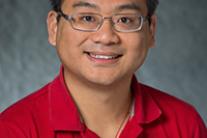Professor Awarded 3-year Board of Regents Grant
Tue, 09/04/2018 - 8:52amProfessor Longfei Li was recently awarded a three-year grant from Board of Regents Support Fund (BoRSF) Research Competitiveness Subprogram (RCS) with total funding of $178,131. This funding will support Professor Li's research project titled "High-Order Computational Methods for Beams and Plates with Applications to Fluid-Structure Interaction Problems." A brief description of the research can be found below.
Beam and plate theories simplify the theories of continuum mechanics for solids that are thin in thickness, and provide a means of calculating the load-carrying and deflection characteristics of thin structures. Beam/plate theories are extensively applied in many areas of engineering and applied science. When interacted with fluid, the fluid-structure interaction (FSI) problems involving deforming beams/plates add even more important applications, such as modeling airplanes, parachutes, and blood flow in elastic arteries. The corresponding development, analysis and implementation of numerical methods for these problems is a very active area of research in computational mechanics. Recent work by Li has led to the development of a new scheme for FSI problems, called the Added-Mass Partitioned (AMP) algorithm. The proposed research aims to (I) develop and analyze high-order accurate computational solid dynamics (CSD) algorithms for various beam and plate models using deforming composite grids and finite-difference discretization; (II) implement the new CSD algorithms within the open-source Overture framework; (III) verify and validate the CSD code using benchmark problems; (IV) apply the CSD code, together with the existing computational fluid dynamics (CFD) code in Overture and the AMP scheme, to solve a wide range of FSI applications of interest; and (V) collaborate with experimentalists to solve sophisticated FSI applications.

